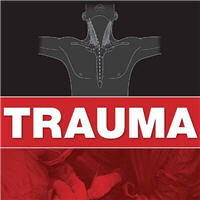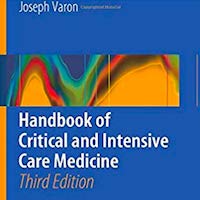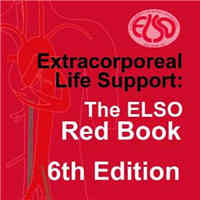Tag: trauma
How Do Resuscitation Teams at Top-Performing Hospitals for In-Hospital Cardiac Arrest Succeed?
Resuscitation teams at hospitals with high IHCA survival differ from non–top-performing hospitals. Our findings suggest core elements of successful resuscitation teams that are associated with better outcomes and form the... read more
The Dreaded Acute Compartment Syndrome
When obtaining intracompartmental pressures, place the catheter within 5cm of the fracture level, with the transducer secured at the level of the measured compartment. Make sure to keep the catheter tip outside of the actual... read more
PTSD Phenomena After Critical Illness
Experiencing critical illness and intensive care can be extremely stressful. Roughly 1 in 5 critical illness survivors have clinically significant post-traumatic stress disorder (PTSD) symptoms in the year after intensive... read more
Stopping ICU delirium by getting patients moving
Doctor says the treatment plan makes a 'massive difference' to those in critical care. Any hospital stay can be traumatic. But 30 percent of patients in intensive care units experience ICU delirium. The rate for... read more
Breaking it Down: Post Intensive Care Syndrome and Recovery – Emotions
The emotional aftermath of critical illness/injury is something that often catches people by surprise but can have a significant impact on daily life. People who have been critically ill/injured often describe difficulty... read more
The Needs of Families of Trauma Intensive Care Patients
This mixed methods study identified that families of trauma patients have different needs to families of general patients and the nurses rated the needs of the families of trauma patients as less important than the families... read more
Predictors of Return to Work in Survivors of Critical Illness
Major trauma, lower GCS and increased hospital length of stay predicted inability to return to work due to health at six-months post-ICU admission. Compared to employed patients, those who had not returned to work reported... read more
Music Helps Prevent Delirium in Elderly Critical Care Patients
A randomized controlled trial demonstrates that music intervention to prevent delirium among older patients is one of few strategies that provide support in a critical care setting. This study builds on non-pharmacologic... read more
Giving plasma in helicopters, before hospital, may save trauma patients
Giving plasma to trauma victims during air transport, rather than waiting until arrival at the hospital, saved lives, according to the results of a study that involved patients treated aboard MetroHealth Medical Center's... read more
The Effect of Alcohol Consumption on the Risk of ARDS
Chronic high alcohol consumption significantly increases the risk of ARDS. This finding suggests that patients admitted to hospital should be screened for chronic alcohol use. Seventeen observational studies (177,674 people)... read more
Prehospital Plasma during Air Medical Transport in Trauma Patients at Risk for Hemorrhagic Shock
In injured patients at risk for hemorrhagic shock, the prehospital administration of thawed plasma was safe and resulted in lower 30-day mortality and a lower median prothrombin-time ratio than standard-care resuscitation.... read more
I Had PTSD After a Critical Illness. Apparently That’s Fairly Common
The emotional trauma of a near-death experience causes ongoing emotional and physical symptoms in one-third of ICU patients. PICS doesn't have a time limitation and can be triggered by almost anything. I was suddenly anxious... read more
Choice of Fluid Therapy in the Initial Management of Sepsis, Severe Sepsis, and Septic Shock
Sepsis results in disruption of the endothelial glycocalyx layer and damage to the microvasculature, resulting in interstitial accumulation of fluid and subsequently edema. Fluid resuscitation is a mainstay in the initial... read more
Why is trauma activation so expensive?
I can understand hospitals charging a fee for trauma activations to help recover some of the costs of having a trauma service. The staff may require some special training. Managing the service, collecting data, and other... read more
Intracranial Pressure Thresholds in Severe Traumatic Brain Injury: Pro
Teleologically, the mammalian brain has evolved to be the central component of life. It coordinates afferent and efferent neural pathways, integrates neurohormonal responses and, in humans, produces higher cortical effects... read more
Survival outcomes after prolonged ICU length of stay among trauma patients: The evidence for never giving up
Prolonged intensive care unit length of stay (ICU-LOS) is associated with high mortality for medical and surgical patients. Existing literature suggests that this may not be true for trauma patients.The results reveal that... read more
Peer Support in Critical Care
Peer support appeared to reduce psychologic morbidity and increase social support. The evidence for peer support in critically ill populations is limited. There is a need for well-designed and rigorously reported research... read more
The Elevated Troponin: What else besides ACS could cause troponin elevation?
The increased troponin used to be a straight ticket to the cardiology service. Now, the picture isn't so clear. What do you need to consider in the patient with elevated troponin? Cardiac troponins consist of three proteins:... read more
When the Air Hits Your Brain: Tales from Neurosurgery
With poignant insight and humor, Frank Vertosick Jr., MD, describes some of the greatest challenges of his career, including a six-week-old infant with a tumor in her brain, a young man struck down in his prime by paraplegia,... read more
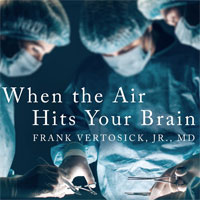
Hurt: The Inspiring, Untold Story of Trauma Care
Told through the eyes of a surgeon who has flown on rescue helicopters, resuscitated patients in trauma centers in Houston and Chicago, and operated on hundreds of trauma victims of all ages, Hurt takes us on a tour of the... read more
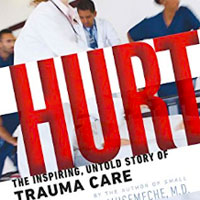
The Contemporary Timing of Trauma Deaths
In this study, the distribution of trauma deaths no longer appears to be trimodal. This may reflect advances in trauma and ICU care, and the widespread adaption of damage control principles. Early deaths, however, remains... read more


